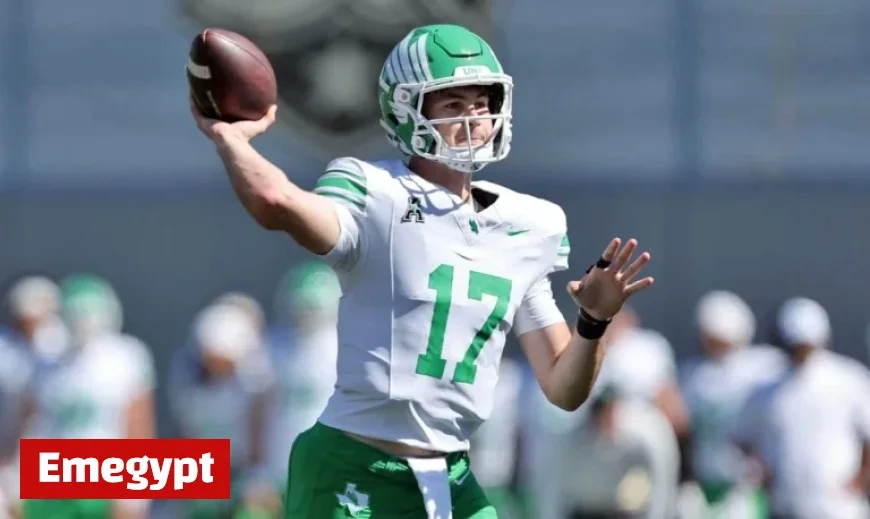Underfunded Group of 5 Program Thrives in Revenue-Sharing Era

In the evolving landscape of college football, the North Texas Mean Green, a Group of 5 program, is navigating challenges linked to revenue-sharing dynamics. As the team celebrates a strong season start, the spotlight shines on quarterback Drew Mestemaker, a potential target for Power 4 programs seeking to poach talent.
North Texas Thrives Amid Limited Resources
The Mean Green currently boast a 6-1 record, their best start since 2018. Under the guidance of first-year head coach Eric Morris, North Texas aims for its first conference championship since 2004. However, the success brings a double-edged sword; with victories come heightened attention from wealthier programs.
General manager Raj Murti and associate athletic director for NIL, Steve Keasler, are acutely aware of the lure of major programs. This season, the Mean Green have already lost 15 players to Power 4 teams during Morris’ tenure. Among these notable transfers are quarterback Chandler Morris and offensive tackle Howard Sampson.
Retention Strategies for Esteemed Players
The emergence of Mestemaker, who accounted for 448 offensive yards and three touchdowns in the First Responder Bowl, raises concerns for the coaching and management staff. With 1,860 passing yards and 21 total touchdowns to his name this season, Mestemaker is attracting attention from at least one SEC team.
- Mestemaker’s breakout performances have not gone unnoticed.
- North Texas is actively trying to retain him and other key players.
Attempts to keep players require substantial financial backing. Murti and Keasler aim to raise at least $1 million to match market rates for top quarterbacks, a figure dwarfed by Power 4 budgets that often exceed $13 million. By comparison, North Texas’ roster budget is estimated to be under $2 million.
Securing Funding for Future Success
Efforts to boost funding include appealing to donors and establishing incentives such as housing and travel arrangements for players’ families. Keasler is also pushing for enhanced overall funding for the football program, as North Texas’ budget lags behind counterparts like USF, with budgets around $10 million.
Morris has taken a proactive approach, fostering relationships with donors and linking fundraising to pleasing strategies, including matching funds challenges. “Let’s close this gap the best we can, little by little,” he said, exhibiting an understanding of the dire financial landscape.
Long-Term Strategic Planning
North Texas’ strategy involves meticulous roster evaluation. Murti leads a personnel team focused on scouting Texas high schools and locating potential talent in the transfer portal. With tight budgets, mistakes in recruitment can prove costly, making strategic decision-making crucial.
As the Mean Green push for a championship, key decisions loom. In addition to safeguarding players like Mestemaker, Morris himself will be a target for higher-echelon programs. The battle for retaining elite talent remains at the forefront of Murti and Keasler’s agendas.
Future Implications of Current Success
The ongoing success of the North Texas Mean Green highlights the complexities faced by Group of 5 institutions in the competitive college football environment. The desire to build a strong roster with limited resources is a formidable challenge, yet the current trajectory showcases resilience and strategic foresight.
The future remains uncertain; nevertheless, the steps taken now may prove pivotal in ensuring sustained success amidst the pressures of a revenue-sharing era. If the Mean Green can hold onto their stars, it may shape their program for years to come.
































